We are four Earth Sciences undergraduate students from the University of Cambridge. We use samples from the Sedgwick Museum’s collections in our studies, so these placements were an exciting chance for us to work behind the scenes on current projects in the Museum. We each spent 1-4 weeks on a project during the summer of 2022, generously funded by the Friends of the Sedgwick Museum.
Building Stone Collection Conservation – Freddie
My placement concerned the conservation and cataloguing of the Watson Building Stones Collection, a comprehensive collection of building stones used extensively across the UK and its colonies in the 19th and early 20th century. 138 of the specimens were carefully removed from their cases and dry cleaned, using a brush and a museum vacuum, before being photographed and having their condition recorded.
This work has substantially improved the catalogue information available for this collection, which we hope will allow for novel research into this wealth of information, such as into the role of stone in the history of empire.
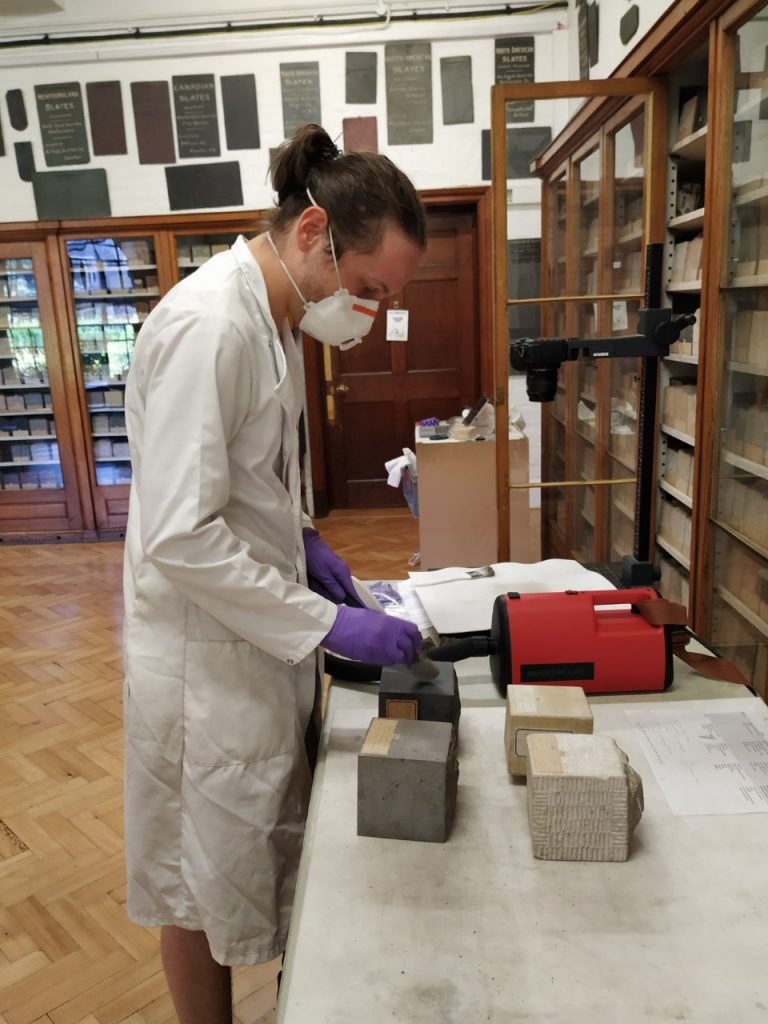
I worked in the Building stones gallery, which is also the Department common room. 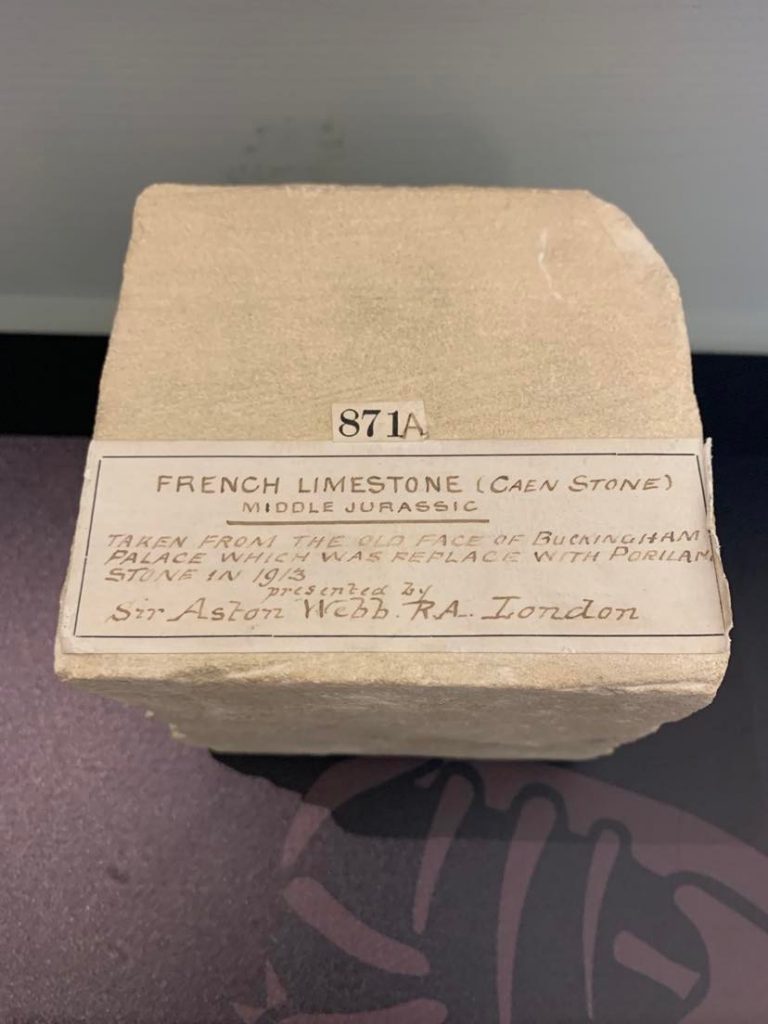
This Middle Jurassic French Limestone is one of the stones I cleaned and catalogued. The label reads “Taken from the old face of Buckingham Palace which was replaced with Portland Stone in 1913.”
Collections Cataloguing and Gallery Re-display – Eloise
This project has been a vital step in creating more opportunities in the Museum for community exhibitions. These exhibitions give a voice to different groups within the community, share the Museum space with the public and explore wider societal themes.
I have been making inventories of uncatalogued objects out on display, labelling them, and recording them on the Museum’s database. I have also been packing away old displays and moving current ones to new homes.
“I also enjoyed being able to experience wider museum behind-the-scenes, such as spending a few days at the Museum’s Collections Research Centre in West Cambridge, and creating this mini exhibition.”
Eloise
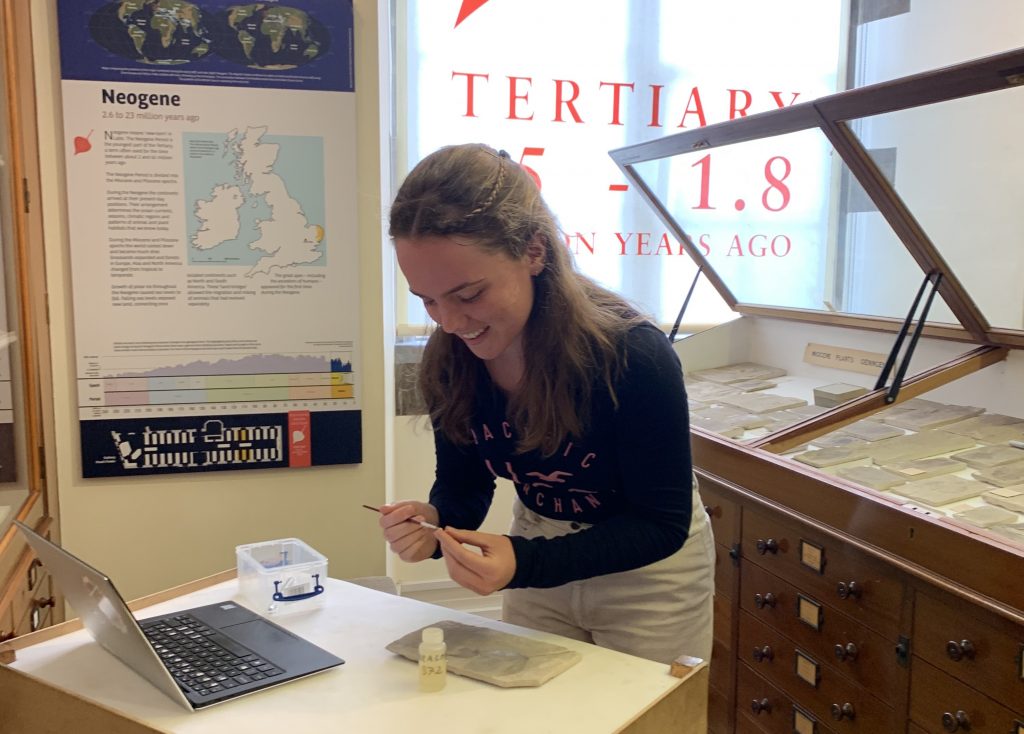
Working in the Museum galleries 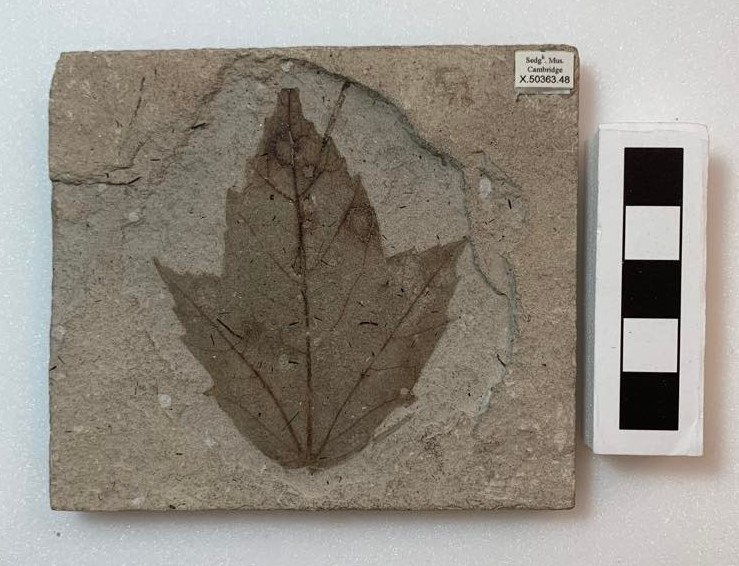
In total, I catalogued and labelled 172 specimens. This fossil Acer trilobatum, from the Miocene epoch (23-5.3 million years ago), is one of the specimens I labelled and entered into the database.
Education Loan Boxes – Korina
I have been updating the Education Loan Boxes, which are boxes of rocks and fossils that the Museum lends to schools. The previous boxes were quite hard to carry, so my project involved organising specimens into new boxes and refreshing the assortment of items in some of them.
We also made a new box, the Mary Anning Box, so children can learn about the types of fossils that she found. The boxes are now much easier to carry and all have a broad range of specimens, ready to be used in schools for teaching.
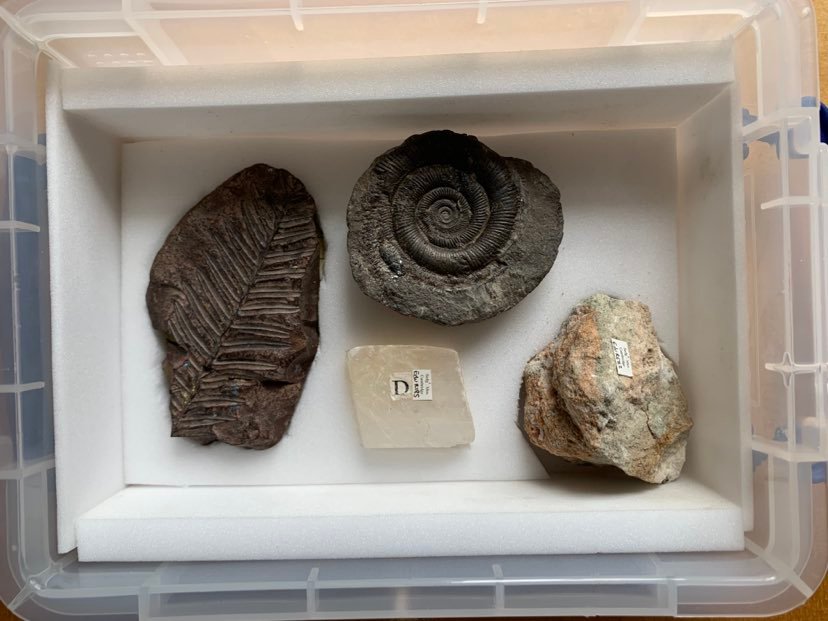
This is a mini version of a new-style loan box. The specimens sit securely in foam and come with an information sheet. These particular specimens are: a fossil leaf in shale from the Carboniferous; an ammonite in shale, from the ‘local fossils and pebbles’ collection; a calcite rhomb; and garnet in marble, a metamorphic rock. 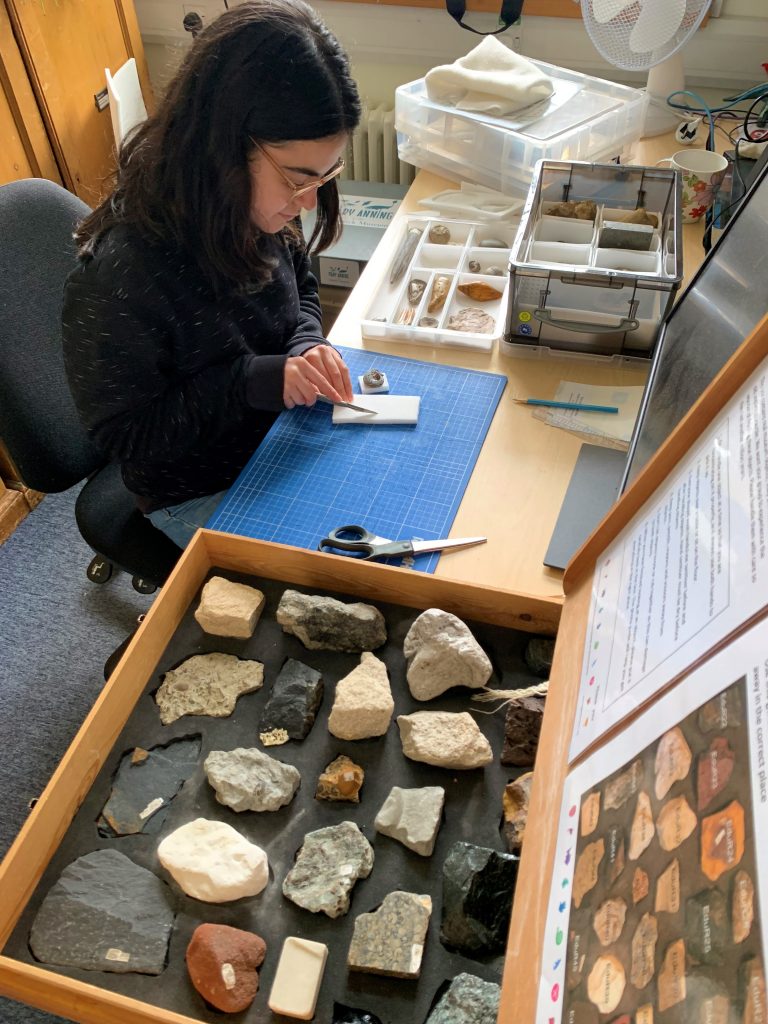
Here you can see me carving the foam inserts that the objects sit in when they’re in the boxes – these are important for keeping the objects in place, so that they don’t break or crash into each other!
Archive Documentation – Jessica
My placement focused on extracting data from the 1878-1983 accessions registers, which track items that enter the Museum’s collection. The aim was to give museum staff a better idea of where to look for items from this time period, in the accessible form of a spreadsheet. There have not always been procedures to catalogue and monitor the movements of specimens, so the accessions register is sometimes the only record of an item entering the collection – this is especially true for additions such as paintings and maps.
I also had the opportunity to repackage some of the equipment files from the Svalbard Exploration Collection, which included magazines, invoices, and correspondence.
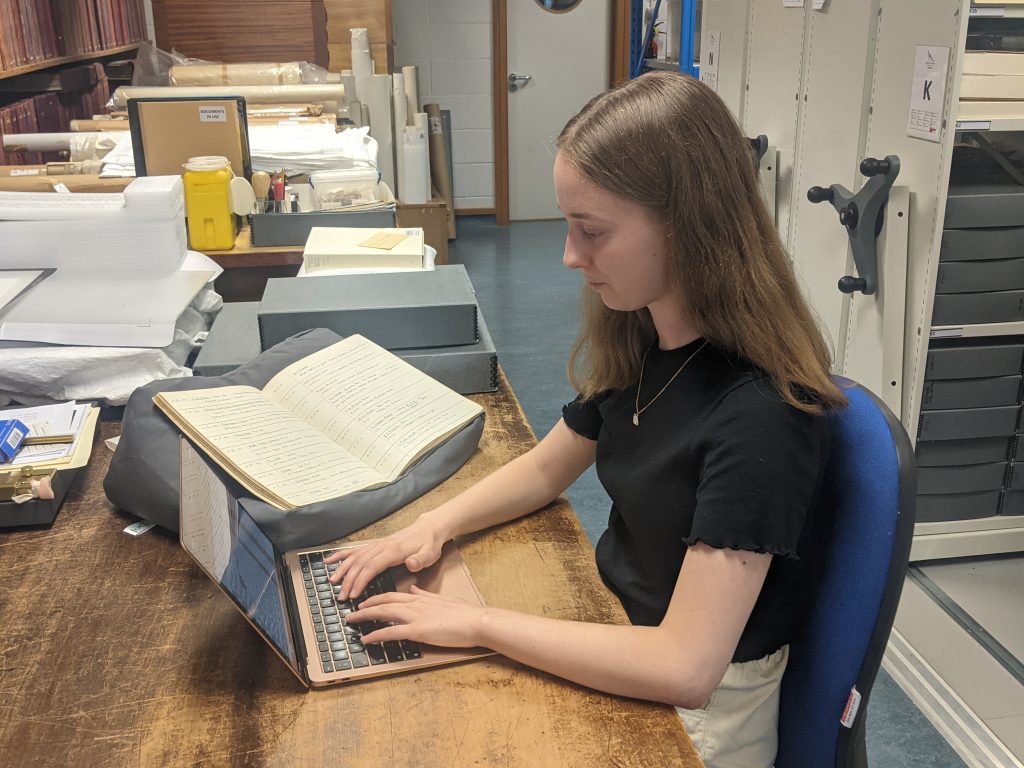
Transcribing documents in the Cambridge Research Centre
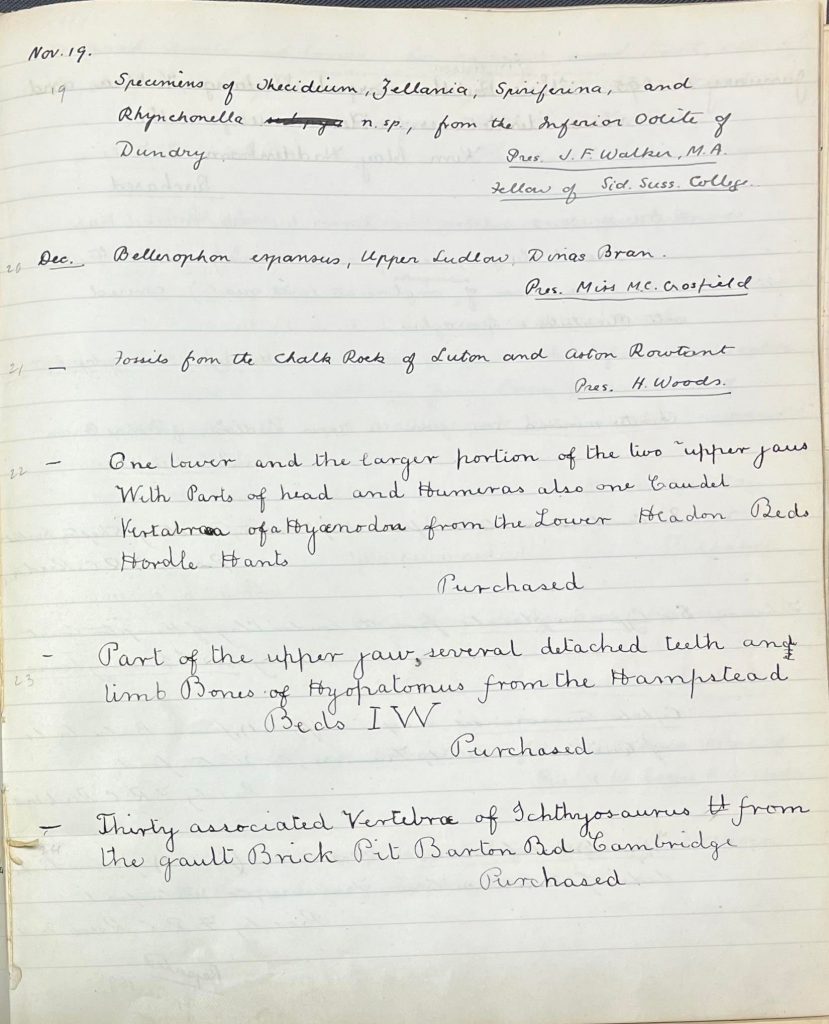
It has become apparent to us that the Museum’s past, present and future underpin its day-to-day activities. Interesting historical records can highlight the contributions of different people to the collection through time, whilst important work conserving specimens today ensures they will be available for future generations. Engaging with the wider community, notably through education and temporary displays, hopes to inspire a new generation of Earth Scientists. We are grateful to both the Museum and the Friends for this opportunity.
“It has been a real pleasure having the four students working with the Museum team over the summer. They’ve brought enthusiasm, energy and new ideas, and they have each played a key role in moving important projects forward. They’ve each been able to gain insights into the work of the Museum, and we hope this will support them in their future careers. We’re really grateful for the support of the Friends of the Sedgwick in enabling these placements to take place.”
Liz Hide, Museum Director


